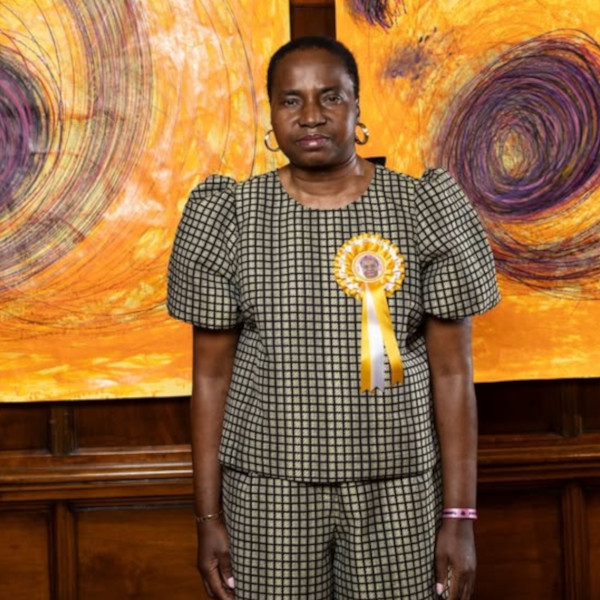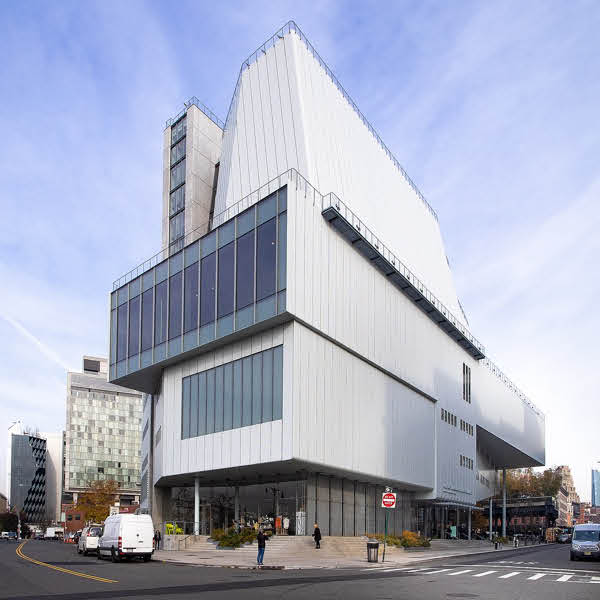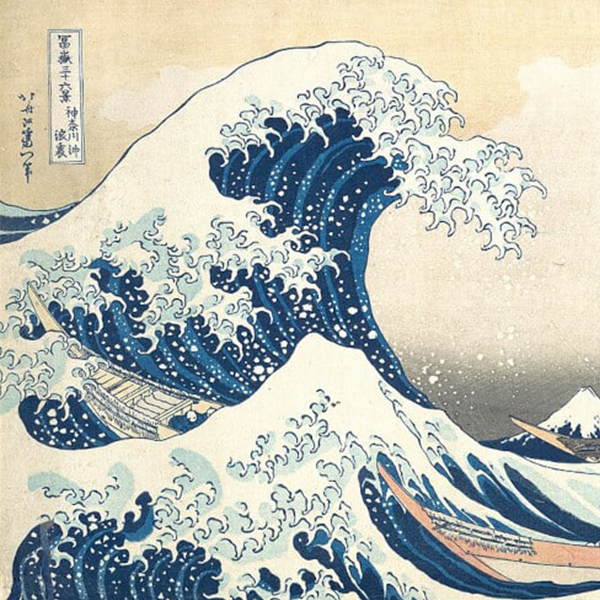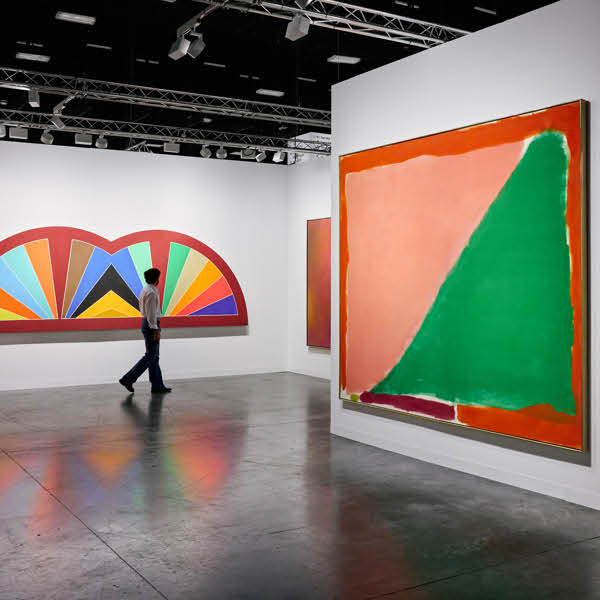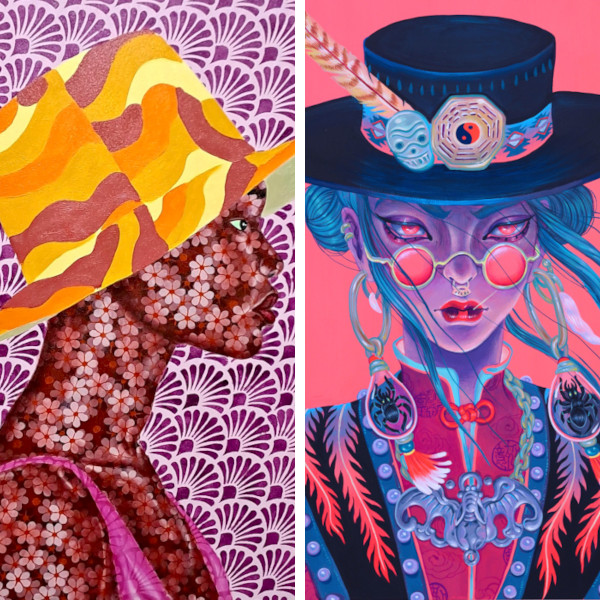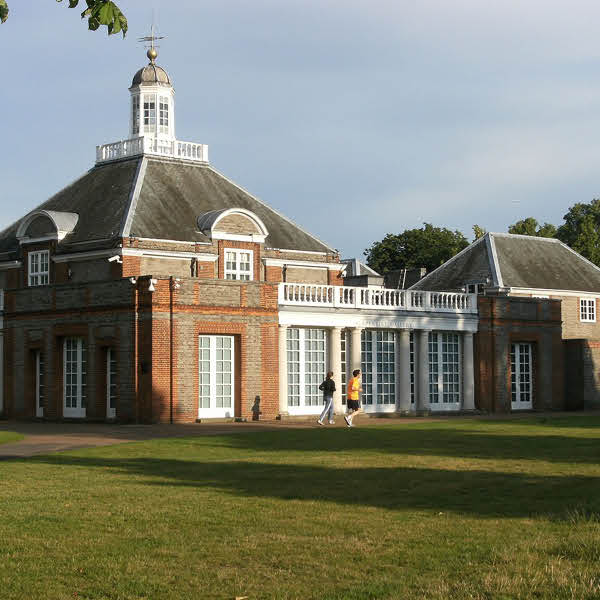 Artist Lisa Nilsson recently began working on a new collection of finely detailed paper sculptures that, from a distance, look just like ornamental carpets. For the project, called Tapis Series, the artist crimps or curls long quarter-inch mulberry strips of paper into thick coils of color. Starting from the center and working outward, she arranges the sections together until beautiful, decorative patterns and designs begin to emerge.
Artist Lisa Nilsson recently began working on a new collection of finely detailed paper sculptures that, from a distance, look just like ornamental carpets. For the project, called Tapis Series, the artist crimps or curls long quarter-inch mulberry strips of paper into thick coils of color. Starting from the center and working outward, she arranges the sections together until beautiful, decorative patterns and designs begin to emerge.
Nilsson's process allows her to explore shapes and colors as the small-scale pieces develop. Throughout the very tedious and time-consuming process–some pieces can take months to complete–Nilsson creates interesting shapes within both the positive and negative spaces. The final results are visually captivating compositions filled with incredible swirling designs that are enclosed by a strong rectangular frame.
Update: We had the fortunate opportunity to ask the artist a few questions about her work. Be sure to check out that interview, below.

Can you tell us a little about your background?
I grew up in a small town in eastern Massachusetts, went to the Rhode Island School of Design (BFA Illustration), worked as an illustrator for many years (greeting cards, magazine illustrations). I started making sculpture when I moved from the midwest back to Massachusetts (this time western Mass) to live/work in loft space renovated for artists in an old mill building. I now live/work in a house in the same town (North Adams) with my husband, Rich who is a researcher for TV and film documentaries.
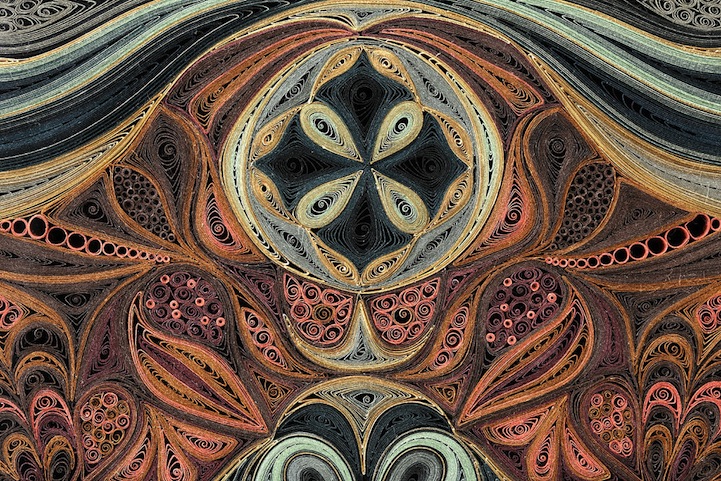
How and why did you start working with paper?
Working with paper grew out of making box-like assemblages in which I would combine many small found and made elements (sometimes hundreds in a 12″ x 12″ piece). I saw an antique piece of quilling in a junk shop and decided to try it to broaden my repertoire of materials/techniques in the boxes.
Can you tell us a little bit about your process?
I have been working with a paper technique called quilling or paper filigree for about 5 years. I cut paper into 1/4″ strips, wind the strips into coils and and pinch them into the shapes I desire. Each shape is glued to it's neighbor and my piece grow from the center out, much like assembling a puzzle.
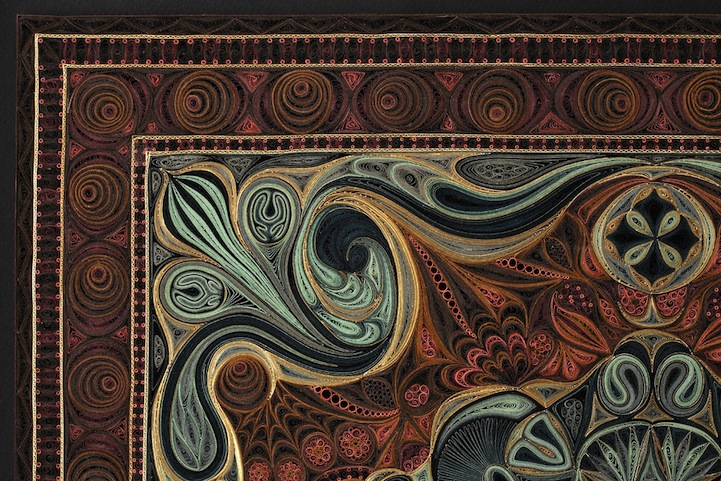
Particularly for your recent series, what inspired you to replicate ornamental carpet designs?
I've been tentatively calling my new work “Tapis Series”… tapis being French for rug or carpet. I'm not specifically interested in rug designs, though I find them beautiful and inspiring. I felt ready to make a shift from the work based on anatomical cross-sections I'd been making. I wanted to more fully and freely explore some of the paper manipulations I'd developed to suit my anatomical subject matter, and also to open up my available color palette. I thought shifting to a more geometric approach would be a place to experiment, though I needed some type of structure to get me moving. My friend (and muse) Jo always has inspiring auction-house catalogues lying around. I'd been looking at one about rugs, and another about antique leather book-bindings for years. In both, I was drawn to the pieces that used the structure of a central medallion, surrounded by a field, with decorative corners and a border. This seems to hit my sweet spot structure-wise. There is lots of room to improvise within this structure and I like some of the effects I get when I make four of any given element–each one is slightly different yet the overall effect of the bilateral symmetry is pleasing.
How long does it take you to produce a single work?
Several months (I have a rather vague sense of time).

What's the most rewarding part of the process?
Watching the whole piece slowly come together, when things fit nicely and snuggly together.
Who or what inspires you?
These days, natural things- botanical forms, insects. I also have been looking at textiles, including rugs.
What's next for you?
Fortunately, or unfortunately, for me I work so slowly that I don't have to look that far ahead. I can foresee letting this new geometric work evolve over the next several years.















































































